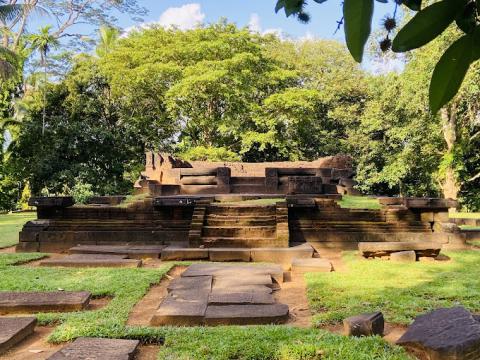Berendi Kovil: A Sacred Ruin with a Royal Legacy
Welcome to Raja Surf School, your premier destination in Galle for safe, fun, and effective surf lessons! Our passion is to share the joy of surfing with everyone, regardless of their prior experience. Led by a certified instructor from the International Surfing Association (ISA), you can be confident in receiving high-quality guidance and learning techniques based on global best practices.
Whether you're stepping onto a surfboard for the very first time, looking to improve your paddling and pop-up, or aiming to master more advanced maneuvers, Raja Surf School has a lesson tailored just for you.
Beginner Lessons
Our introductory sessions focus on the fundamentals: ocean safety, understanding your equipment, paddling techniques, and the exhilarating feeling of catching your first wave. We'll guide you in a safe and supportive environment at beginner-friendly surf spots in the Galle area.
Berendi Kovil: A Sacred Ruin with a Royal Legacy
Introduction
Tucked away in Maniyangama, just 2 km from Avissawella, the Berendi Kovil stands as a testament to Sri Lanka’s rich religious and political history. Built under the patronage of King Rajasinha I of Sitawaka after his dramatic conversion to Hinduism, this ancient temple ruins whisper tales of faith, power, and cultural fusion.
For history buffs, spiritual seekers, and offbeat travelers, Berendi Kovil offers a rare glimpse into a lesser-known chapter of Sri Lanka’s past.
Historical Significance
The King’s Conversion
- King Rajasinha I (1544–1593), originally Buddhist, embraced Hinduism under the influence of Arittakeevendu Perumal, a renowned priest.
- This conversion marked a pivotal shift in the Sitawaka Kingdom’s religious landscape during its wars against Portuguese colonizers.
Architectural Legacy
- Designed by Perumal, the kovil (temple) blended Dravidian Hindu styles with local Sinhalese elements.
- Though now in ruins, remnants of carved stone pillars and the shrine base hint at its former grandeur.
Visiting the Ruins
What to See
- Stone Foundations: Trace the temple’s original layout.
- Sacred Pond: Likely used for rituals, now overgrown but serene.
- Carved Motifs: Faint remains of Hindu iconography on weathered stones.
Atmosphere
The site exudes a peaceful, mystical vibe, surrounded by coconut groves and rural scenery.
Best Time to Visit
- Early morning or late afternoon for soft light and cooler temperatures.
- Avoid heavy rain days (July–September) as paths may get muddy.
Travel Tips
- Location: 2 km from Avissawella on Avissawella-Dehiowita Road (GPS: 6.9436°N, 80.2203°E).
- Entry: Free; no formal facilities.
- Attire: Dress modestly (shoulders/knees covered) as a sign of respect.
- Guides: Local villagers may share oral histories—offer a small tip.
Nearby Attractions
- Seethawaka Botanical Garden (15 mins): Explore rare wet-zone plants.
- Tomb of Seethawaka Rajasinha (30 mins): Pay homage to the king.
Local Insights
Legends & Lore
- Some believe the temple was destroyed by the Portuguese, while others attribute its decay to time.
- Villagers occasionally leave fresh flowers or coconuts as offerings.
How to Visit Respectfully
- Observe silence—this is still a sacred space for locals.
- Avoid climbing on fragile ruins.
Plan Your Visit
Unearth Sri Lanka’s hidden histories with Sri Lanka Tour Help. We offer:
- Cultural tours to Avissawella’s historical sites.
- Custom itineraries blending ruins, nature, and local encounters.
Step into the footprints of a king’s faith. Book your journey today!



Comments
There are no comments yet